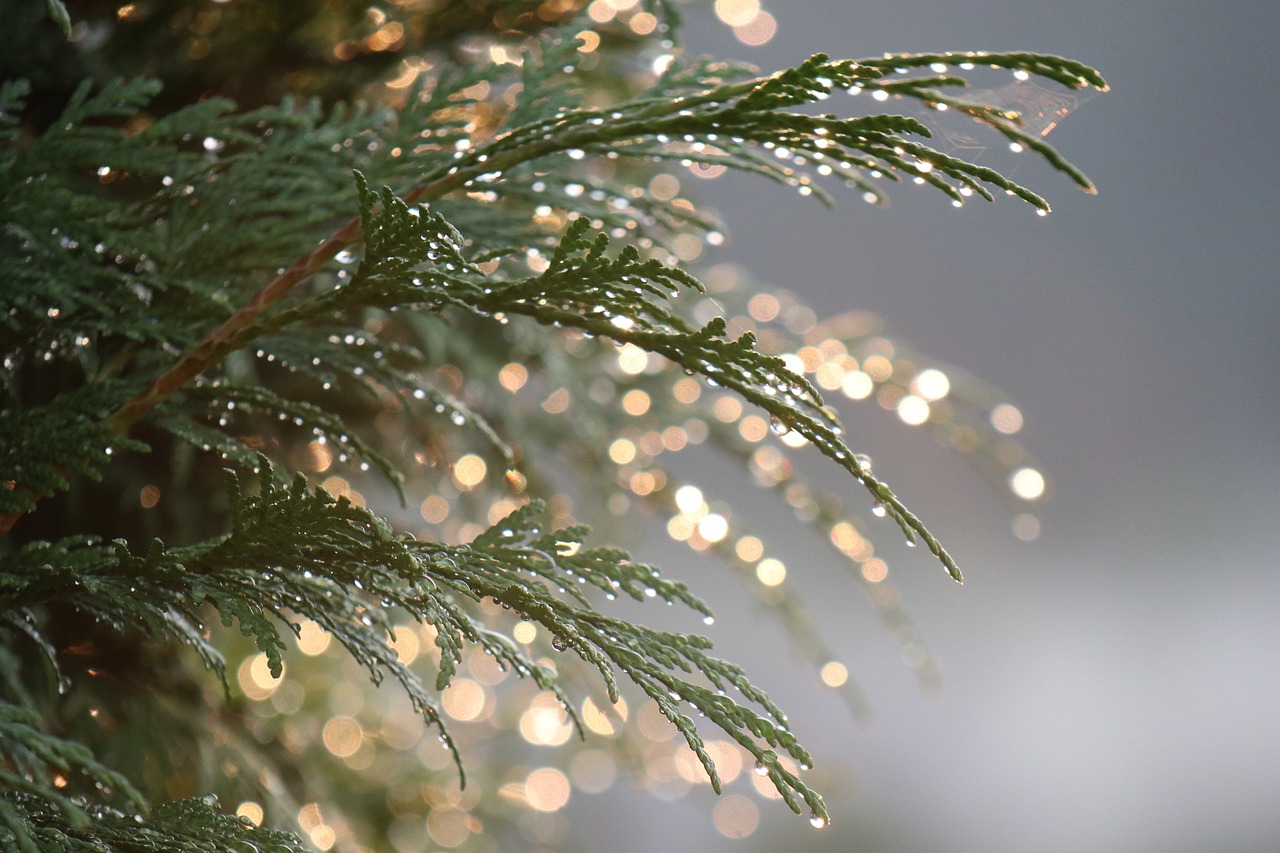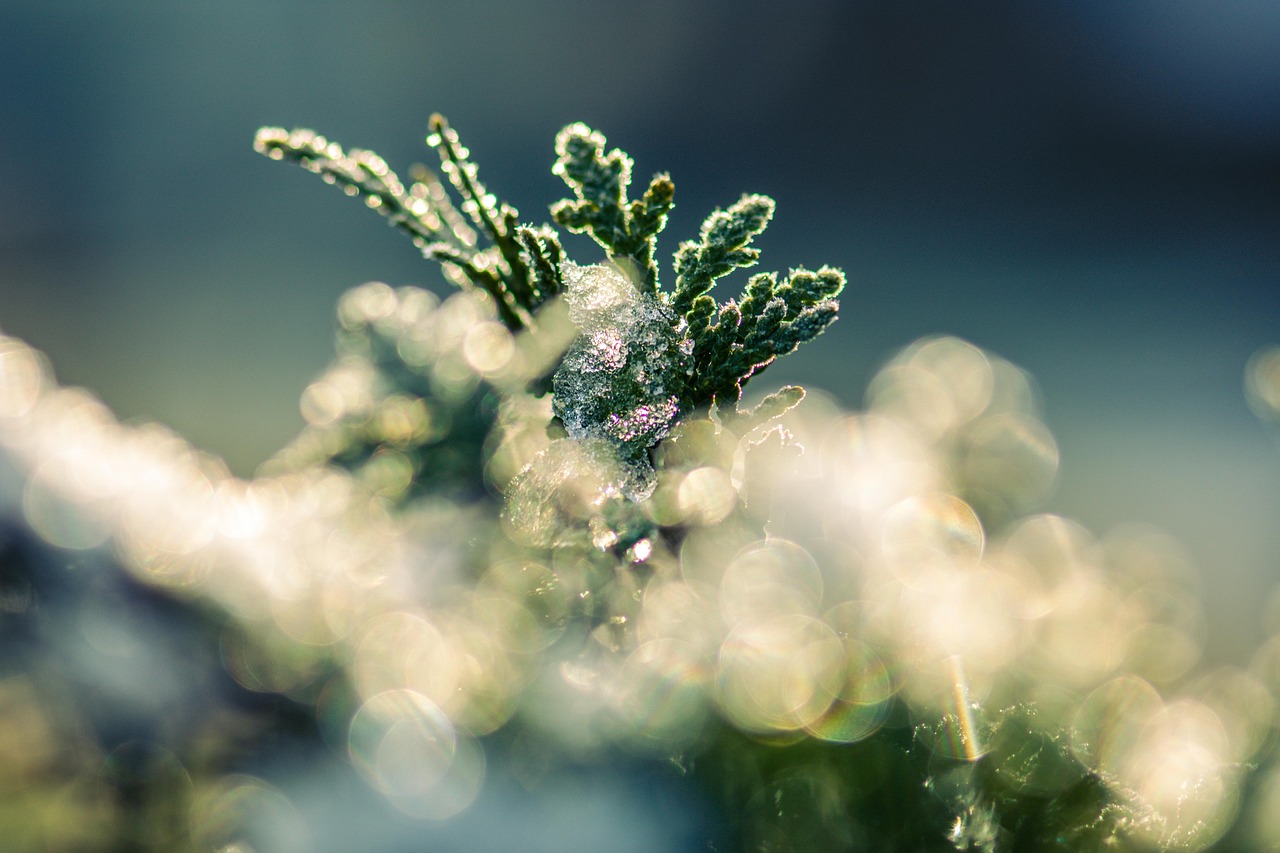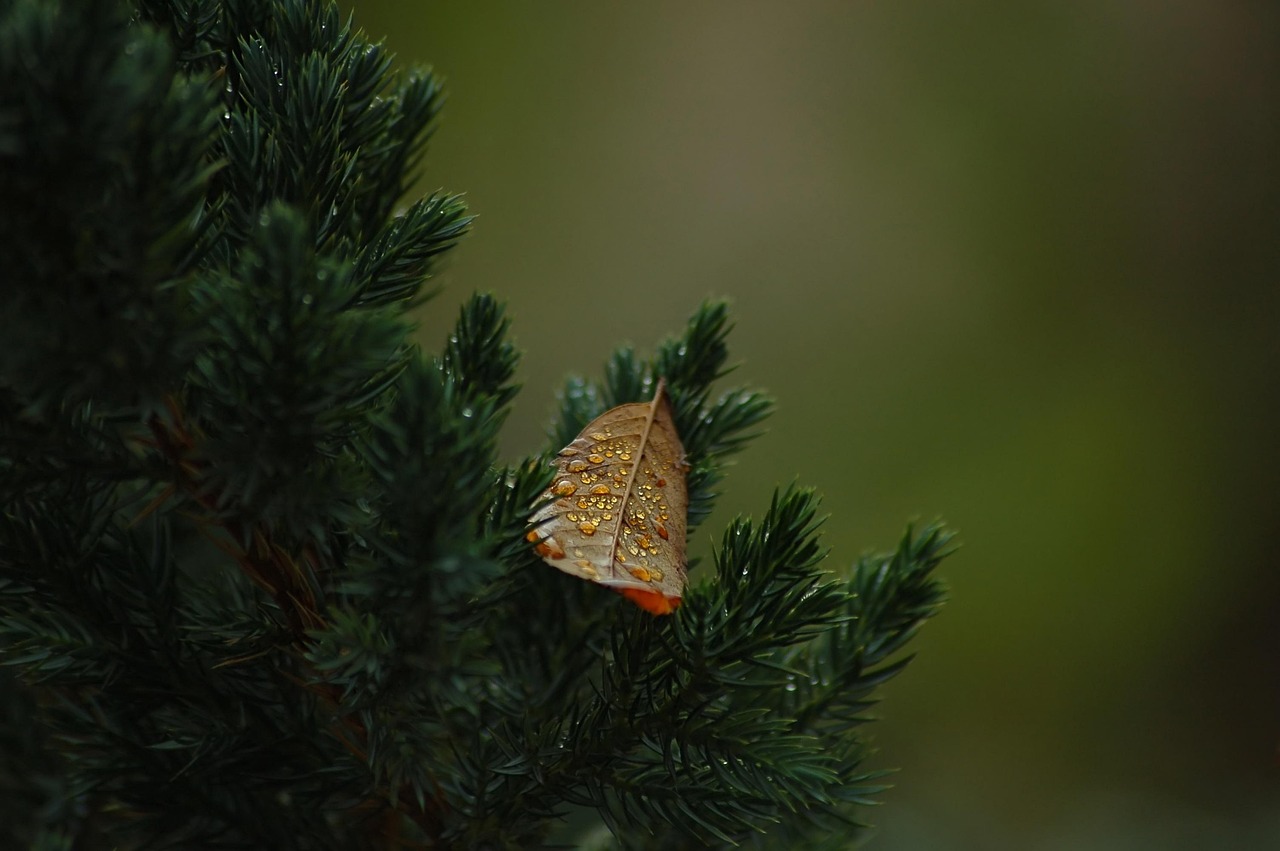Thuja trees, commonly known as arborvitae, exhibit a growth rate of 12 to 24 inches per year, making them an excellent choice for creating dense green hedges. Their rapid growth allows for quick privacy and sound barriers in residential landscapes.
Thuja trees are popular evergreen conifers used extensively in landscaping. They are favored for their lush green foliage and ability to thrive in various climates. These trees are particularly valued for their fast growth rates, which provide an effective solution for homeowners seeking privacy and aesthetic appeal. A dense hedge formed by Thuja can serve as a natural fence, blocking noise and visual distractions.

There are several varieties of Thuja, with the most common being Thuja occidentalis, or eastern arborvitae, and Thuja plicata, or western red cedar. Both species have their unique characteristics and growth habits. Understanding the growth rate of these trees is essential for proper planting and maintenance, ensuring that they achieve the desired height and density.
Understanding Thuja Growth Rates
The growth rate of Thuja trees varies based on several factors such as species, soil quality, water availability, and sunlight. Generally, these trees are known for their fast growth. Here are some key factors influencing their growth rates:
- Species Variety: Different species exhibit varying growth rates. For instance, Thuja occidentalis grows moderately fast, while Thuja plicata can grow more quickly under optimal conditions.
- Soil Quality: Well-draining, nutrient-rich soil promotes faster growth. Soil pH should ideally be between 6.0 and 8.0.
- Watering: Consistent moisture is crucial, especially during dry spells. However, overwatering can lead to root rot.
- Sunlight: Thuja trees prefer full sunlight but can tolerate partial shade. Adequate sunlight encourages robust growth.
To illustrate the differences in growth rates among common Thuja species, the following table provides a comparison:

| Species | Average Growth Rate (inches per year) | Ideal Growing Conditions |
|---|---|---|
| Thuja occidentalis | 12 – 24 | Well-drained soil, full sun to partial shade |
| Thuja plicata | 24 – 36 | Nutrient-rich soil, full sun |
| Thuja standishii | 12 – 18 | Moist soil, partial shade |
The rapid growth of Thuja trees makes them ideal candidates for creating hedges that not only provide privacy but also add visual interest to gardens and landscapes. When planted correctly and given proper care, they can reach their full potential within a few years.
For optimal hedge formation, it is recommended to space the trees appropriately. Planting them too close together may result in competition for nutrients and water, hindering their growth. A spacing of 3 to 4 feet apart is typically suggested for a dense hedge effect.
Regular maintenance is also crucial in ensuring the healthy growth of Thuja hedges. This includes proper watering, fertilization, and pruning practices. Fertilizing in early spring with a balanced fertilizer helps provide the necessary nutrients for vigorous growth. Pruning should be done annually to maintain shape and remove any dead or diseased branches.

In summary, Thuja trees are an excellent choice for creating dense green hedges due to their impressive growth rate and adaptability to various growing conditions. Understanding the specific needs of these trees will contribute significantly to their successful establishment and maintenance in any landscape design.
Factors Influencing Thuja Growth Rate
Several factors can significantly influence the growth rate of Thuja trees. Understanding these factors can help gardeners and landscapers optimize their planting strategies for the best results. Below are some of the key elements that affect how quickly Thuja trees grow.
Soil Type
The type of soil in which Thuja trees are planted plays a critical role in their growth rate. Well-draining soil is essential to prevent waterlogging, which can lead to root rot. Sandy loam or loamy soils are ideal for Thuja trees. They provide adequate drainage while retaining enough moisture for healthy growth.
Climate and Weather Conditions
Thuja trees thrive in a variety of climatic conditions, but they tend to grow best in temperate regions with moderate rainfall. Extreme weather conditions, such as prolonged drought or excessive heat, can slow down their growth. Similarly, cold temperatures can hinder their development if they are not acclimatized properly.

Watering Practices
Proper watering is vital for the growth of Thuja trees. During the first few years after planting, consistent watering is necessary to establish a strong root system. Here are some tips for effective watering:
- Frequency: Water young trees deeply once a week during dry spells.
- Technique: Use soaker hoses or drip irrigation systems to avoid wetting the foliage.
- Signs of Water Stress: Yellowing leaves or wilting may indicate insufficient water.
Nutrient Requirements
Nutrients in the soil greatly impact the growth rate of Thuja trees. Regularly testing soil for nutrient levels can guide appropriate fertilization. Here are essential nutrients that support healthy growth:
- Nitrogen: Promotes leaf and stem growth.
- Phosphorus: Important for root development and flowering.
- Potassium: Enhances overall plant health and disease resistance.
Fertilizing Thuja trees in early spring with a balanced fertilizer can provide the necessary nutrients for vigorous growth. It is essential to follow the recommended application rates to avoid over-fertilization, which could lead to increased susceptibility to pests and diseases.
Pest and Disease Management
Thuja trees can be susceptible to various pests and diseases that can adversely affect their growth rates. Regular monitoring and prompt action are essential to maintain healthy trees. Some common pests include:
- Bagworms: These caterpillars create silk bags on branches and can defoliate trees if left untreated.
- Aphids: Small insects that suck sap from the leaves, causing yellowing and stress.
- Spider Mites: Microscopic pests that can cause leaf discoloration and drop.
In addition to pests, Thuja trees are also prone to diseases such as:
- Canker Diseases: These cankers can weaken branches, leading to dieback.
- Root Rot: Often caused by overwatering and poor drainage, it leads to root decay.
To manage these issues, regular inspections of the trees should be conducted. If any signs of pests or diseases are noticed, appropriate treatments should be applied promptly. Organic solutions, such as insecticidal soap or neem oil, can be effective against many common pests.
Pruning Techniques for Optimal Growth
Pruning is an essential practice for maintaining the health and shape of Thuja hedges. Proper pruning encourages bushy growth and helps maintain the desired height. Here are some effective pruning techniques:
- Timing: Prune during late winter or early spring before new growth begins.
- Technique: Use sharp, clean pruning shears to make clean cuts. Avoid tearing the bark.
- Shape Maintenance: Focus on shaping the hedge by trimming the top and sides evenly to encourage lateral growth.
Removing dead or diseased branches during pruning helps improve airflow around the plant, reducing the risk of disease. Regular maintenance through pruning not only helps in achieving a dense hedge but also promotes healthier growth overall.
Choosing the Right Thuja Varieties for Hedges
When selecting Thuja varieties for creating dense green hedges, it is essential to consider growth rate, size, and adaptability to local conditions. Different varieties offer unique qualities that can complement various landscape designs. Below are some popular Thuja species ideal for hedging:
Thuja occidentalis
Commonly known as eastern arborvitae, this variety is favored for its pyramidal shape and dense foliage. It typically grows 12 to 24 inches per year and can reach heights of up to 30 feet. Thuja occidentalis is ideal for formal hedges due to its uniform growth habit.
Thuja plicata
Known as western red cedar, Thuja plicata is a larger species that can grow up to 36 inches per year under optimal conditions. This variety is prized for its fragrant wood and rich color. It is particularly suited for larger properties or areas where a more imposing hedge is desired.
Thuja standishii
This species, often referred to as Japanese arborvitae, grows at a moderate rate of 12 to 18 inches annually. It features a more compact growth habit and is suitable for smaller spaces. Its attractive foliage makes it a popular choice for decorative hedges.
Planting Techniques for Healthy Growth
The success of Thuja hedges greatly depends on proper planting techniques. Following these steps can ensure that the trees establish well and thrive in their new environment.
- Site Selection: Choose a location that receives full sun to partial shade. Ensure the soil drains well and is free from standing water.
- Preparing the Soil: Before planting, amend the soil with organic matter such as compost to improve nutrient content and drainage.
- Digging the Holes: Dig holes that are twice as wide as the root ball but no deeper than the root ball itself. This encourages lateral root growth.
- Spacing: Space the trees according to their growth habits. For dense hedges, a spacing of 3 to 4 feet apart is recommended.
- Watering After Planting: Water the newly planted trees thoroughly. This helps settle the soil around the roots and reduces air pockets.
Maintenance Practices for Long-Term Health
Maintaining healthy Thuja hedges requires consistent care beyond initial planting. Key maintenance practices include watering, mulching, and seasonal care.
Watering
During the first few years, consistent watering is crucial for establishing a strong root system. After that, watering needs may decrease, but it is important to monitor soil moisture levels.
- Deep Watering: Water deeply and infrequently to encourage deep root growth.
- Mulching: Applying a layer of mulch around the base can help retain moisture and suppress weeds.
- Drought Conditions: During dry spells, be prepared to increase watering frequency to prevent stress on the trees.
Seasonal Care
Different seasons bring unique challenges and opportunities for maintaining Thuja hedges. Here are some seasonal care tips:
- Spring: Fertilize with a balanced fertilizer and prune any dead or damaged branches after new growth appears.
- Summer: Monitor for pests and diseases, and ensure adequate watering during hot weather.
- Fall: Apply mulch to protect roots during winter and prepare for seasonal changes.
- winter: Protect young plants from heavy snow load or ice by gently shaking off accumulated snow.
Pest Management Strategies
Effective pest management is vital for maintaining healthy Thuja hedges. Integrated pest management (IPM) strategies can minimize damage while reducing chemical use. Here are some strategies:
- Cultural Controls: Maintain healthy trees through proper watering and fertilization to enhance resilience against pests.
- Physical Controls: Hand-picking visible pests or using barriers can help prevent infestations.
- Biosolutions: Introducing beneficial insects, such as ladybugs, can help control aphid populations naturally.
By understanding pest dynamics and implementing these strategies, gardeners can enjoy lush, healthy Thuja hedges throughout the growing season.
Long-Term Benefits of Thuja Hedges
Establishing a dense green hedge with Thuja trees offers numerous long-term benefits beyond mere aesthetics. These benefits include environmental advantages, increased property value, and enhanced privacy. Understanding these advantages can help homeowners appreciate their investment in Thuja hedges.
Environmental Advantages
Thuja trees play a significant role in improving the environment. Their dense foliage provides several ecological benefits:
- Air Quality Improvement: Thuja trees absorb carbon dioxide and release oxygen, contributing to cleaner air.
- Habitat for Wildlife: The dense structure of Thuja hedges provides shelter for birds and beneficial insects, promoting biodiversity.
- Soil Erosion Prevention: The extensive root systems of Thuja trees help anchor the soil, reducing erosion on slopes and hillsides.
Increased Property Value
A well-maintained Thuja hedge can significantly enhance the curb appeal of a property. Here are some reasons why:
- Visual Appeal: A lush, green hedge creates an inviting atmosphere, making homes more attractive to potential buyers.
- Privacy and Security: Thuja hedges serve as natural barriers against noise and prying eyes, adding perceived value to the property.
- Defined Boundaries: They provide clear demarcation of property lines, reducing disputes with neighbors.
Enhanced Privacy
One of the main reasons homeowners choose Thuja for hedges is their ability to create privacy. Dense hedges effectively block views from neighboring properties and busy streets. This privacy allows residents to enjoy their outdoor spaces without feeling exposed. Additionally, it serves as a noise buffer, making yards more tranquil and enjoyable.
Common Challenges and Solutions
While Thuja trees are generally easy to maintain, certain challenges may arise during growth. Being aware of these potential issues can help homeowners take proactive measures to ensure the health of their hedges.
Disease Management
As previously mentioned, Thuja trees can be susceptible to various diseases. Here are common diseases and their solutions:
- Canker Diseases: These can be managed by ensuring proper air circulation through pruning and avoiding overhead watering.
- Root Rot: This is often caused by overwatering. Ensure proper drainage and consider planting in raised beds if drainage is a concern.
Pest Control
In addition to the pest management strategies mentioned earlier, regular inspections for pests can help catch infestations early. A good practice is to observe the overall health of the plants and look for any signs of distress, such as yellowing leaves or stunted growth.
Final Thoughts
Thuja trees offer a fantastic option for creating dense green hedges that provide beauty, privacy, and environmental benefits. Their rapid growth rates allow for quick establishment, making them ideal for homeowners looking to enhance their property without long waiting periods. By understanding the specific needs of these trees—such as soil requirements, watering practices, nutrient management, and pest control—gardeners can cultivate lush hedges that thrive for years.
The investment in Thuja hedges pays off not just in terms of visual appeal but also through the added privacy and environmental advantages they bring. Regular maintenance practices, including pruning and disease management, will ensure that these trees remain healthy and continue to grow effectively over time.
In summary, with careful planning and attention to detail, anyone can successfully grow Thuja hedges that not only transform their landscape but also contribute positively to their surroundings. Embracing these beautiful trees will yield long-lasting rewards for both homeowners and the environment.
